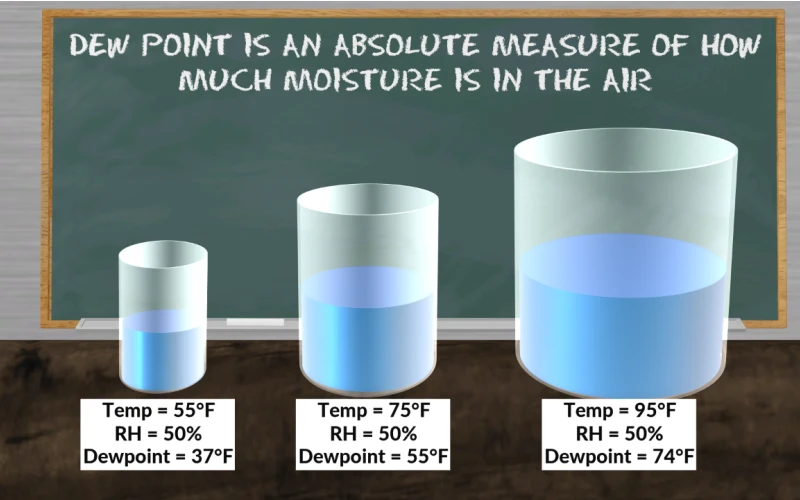
# High Dew Point Conditions and Their Impact on Weather Patterns
## Understanding Dew Point
The dew point is the temperature at which air becomes saturated with water vapor, leading to condensation. When the dew point is high, it indicates a significant amount of moisture in the air. High dew point conditions often result in muggy, uncomfortable weather and can influence various meteorological phenomena.
## How High Dew Points Affect Human Comfort
High dew points make the air feel heavier and more oppressive. When combined with high temperatures, these conditions can lead to:
– Increased perspiration
– Reduced evaporative cooling
– Higher heat index values
– Greater risk of heat-related illnesses
## Meteorological Impacts of High Dew Points
Elevated dew points play a crucial role in weather pattern development:
### Thunderstorm Formation
High moisture content in the atmosphere provides the necessary fuel for severe thunderstorms. When warm, moist air rises and cools, the abundant water vapor condenses rapidly, releasing latent heat that further fuels storm development.
### Tropical System Enhancement
Tropical storms and hurricanes thrive on high dew point air, which provides the energy needed for intensification. Ocean surfaces with high evaporation rates contribute to this moisture-rich environment.
### Fog Development
When temperatures drop at night but remain near the dew point, fog formation becomes likely. This is particularly common in coastal areas or river valleys where moisture is abundant.
## Measuring and Forecasting High Dew Point Events
Meteorologists use various tools to monitor dew points:
– Hygrometers for direct measurement
– Weather balloons with radiosondes
– Satellite moisture imagery
– Computer models that calculate dew point spread
Forecasting high dew point conditions helps predict:
Potential severe weather outbreaks
Heat advisory thresholds
Agricultural moisture stress
Energy demand fluctuations
## Climate Change and Dew Point Trends
Recent studies suggest that climate change may be contributing to higher average dew points in many regions. Warmer air can hold more moisture, potentially leading to:
– More frequent high humidity days
– Increased precipitation intensity
– Shifts in traditional weather patterns
– Altered growing seasons for crops
Understanding high dew point conditions and their effects on weather patterns remains crucial for accurate forecasting and climate adaptation strategies. As our climate evolves, monitoring these moisture indicators will become increasingly important for public safety and economic planning.
Keyword: high dew point
